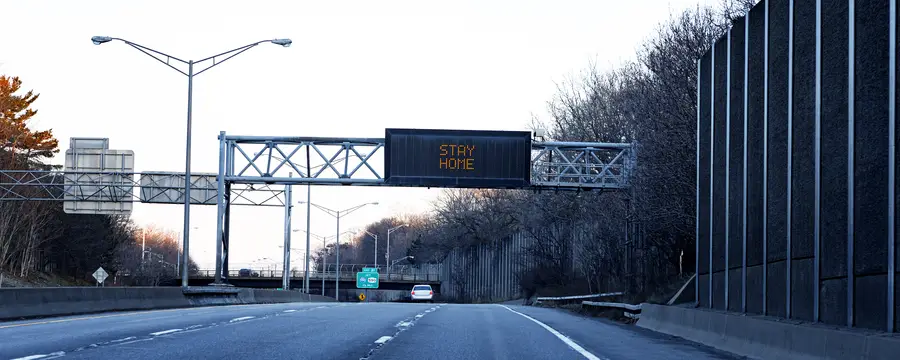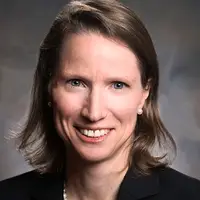Insights
Buying time: Time for the U.S. Southeast to Shelter in Place

Imagine studying the solar system but you only have reliable data about Earth. You might have relatively good information about Earth’s atmosphere, its climate, and inhabitants, but the rest of the solar system is unknown in both size and scope. You don’t know, for example, if there are other planets, and if so, how many. You also don’t know whether they have water or living creatures. Yet you have to make conclusions with the limited data available. That’s essentially what is happening right now with the COVID-19 pandemic. Epidemiologists, scientists, and clinicians only have good data on what is happening in clinical settings with the sickest patients. We can count the number of tests conducted and the number of positive results, and we can use those data to make epidemic curves and maps. But those data only tell us a portion of what we need to know.
The data are blurry but the message is clear: we must reduce infections
Despite this limited knowledge, a majority of scientists agree that social distancing is the single best strategy available today to save lives, and it should be expanded to all Midwest states and especially intensified by people living in the U.S. Southeast. The reason scientists feel so certain about social distancing is that despite being imperfect, the limited available data about the epidemic provide a frightening glimpse of what could be on the horizon: personal protective equipment and supplies for healthcare workers are running and low and state governments are setting up field hospitals, parking lot triage centers, and attempting to procure more ventilators to manage surges in cases. Anecdotal reports suggest that the healthcare workforce may actually be shrinking as physicians and nurses get sick themselves and have to return home. Even though this information provides a small, blurry window into the “solar system” of the full COVID-19 pandemic, most agree that we are on the “growth” phase of the epidemic curve. Simply stated, the number of cases and deaths will continue to increase in the coming days if we don’t continue our efforts to socially distance. More hospital systems will be overwhelmed, large segments of the population will become infected, and more will die.
Social distancing is the best of very limited options
Social distancing is the single most effective response at our disposal to control the pandemic. Social distancing is a risk reduction measure to combat COVID-19 that means “remaining out of congregate settings, avoiding mass gatherings, and maintaining distance (approximately 6 feet or 2 meters) from others when possible.” Sheltering in place is an intensified version of social distancing that means staying at home except for certain essential activities. To understand why these strategies are so important in the COVID-19 crisis, it can be helpful to use concepts from infectious disease epidemiology. Consider the basic reproductive number known as R0, the average number of secondary infectious cases produced by one infectious case. In an epidemic, if R0 is less than one 1, the number of new cases will decline and the epidemic will burnout. If R0 is more than 1, the number of new cases will increase and the epidemic will continue to get worse. For the virus that causes COVID-19, R0 is probably between 2 and 3, meaning that each person with COVID-19 will infect, on average, to about 2-3 additional people…even (especially) if the person doesn’t know they are infected. (In fact, from an evolutionary perspective, it is in the virus’s best interest to infect as many people as possible to keep propagating itself and the best way to do that is to not make people sick).
To understand why social distancing can be so effective, consider the three ‘ingredients’ of R0: 1) how long a person is contagious, 2) how likely it is that transmission occurs between two people if one of them is infected, and 3) the rate at which people contact each other. Essentially, those are the three levers we can pull to slow an epidemic, but in the current situation, only one can have a major impact on slowing down the epidemic. Here’s why.
First, we don’t yet know a lot about when people become contagious – early reports suggest that people are probably able to infect others a day or two before they develop symptoms, which means they are walking amongst us and inadvertently infecting family, friends, and community members. We also don’t know for how long people are contagious. Without a treatment that shortens the duration of infectiousness (contagion), there’s not much we can do to pull lever #1.
Second, if a person is exposed to someone COVID-19, we know that personal protective equipment like N95 masks, gloves, and stringent hand hygiene can help to minimize the risk of acquisition. This applies most to healthcare providers, who need these essential products to minimize their risk when they are knowingly exposed to people with COVID-19 in clinical settings. CDC recently changed their guidelines to recommend that the general public cover their noses and mouths in public to interrupt community-based transmission. However, it’s unclear whether these strategies, which comprise lever #2, will have a significant population-level impact on the epidemic.
That leaves lever #3. Reducing the contact rate means reducing the changing the ways that individuals and populations interact and therefore spread infectious agents. Isolating people with COVID-19 is one way to reduce the contact rate between infected and uninfected people, as is quarantining people who may have been exposed to someone with COVID-19. But those strategies work best when you can identify with certainty who has the disease and who does not. In the current situation, when we mostly don’t know who is infected and who isn’t (due to testing delays and lots of people about with asymptomatic infections), reducing the contact rate essentially means that the entire population needs to reduce mixing. Thus, in the absence of a vaccine, which will be months away, level #3 is our most effective disease control strategy.
The global experience tells us that this can work
Some think that the reason the situation in Italy got so out of control is because of delays in limiting the movement of people. For example, Lodi and Bergamo are two adjacent provinces in the Lombardy region of Italy. Lodi began sheltering in place on February 9th, whereas Bergamo delayed implementing shelter in place until March 9th. A partial consequence of these delays is that people were mixing for longer, unknowingly transmitting the virus. We also have evidence of the value of early measures to socially distance in the 1918 influenza pandemic; communities that intervened earlier in 1918 had a lower mortality rate and their economies rebounded faster after the pandemic. These experiences suggest that if we don’t get very serious about shelter in place right now, it may be too late.
Behave as if you are already infected
At this point in the epidemic, SARS-CoV-2 virus is probably circulating in many if not most communities in the United States. Given that we simply don’t know how many cases are asymptomatic or mild, we should behave as if we already are infected. Thus, change your behavior to protect those you love and vulnerable people in your community. Even those under 65 may be vulnerable if they have underlying health conditions that make them more vulnerable to severe COVID-19 disease and hospitalization (e.g., heart disease, high blood pressure, diabetes). Large segments of the population fall into these groups.
The implications are that unnecessary trips to the grocery store, group outings on the beach, or interactions with others at the park could mean life and death for someone’s grandmother. We should be overcautious and assume that those in the street, those in the aisle at the grocery store, and those passing on the hiking trail are infected. And, even if you aren’t already infected, you don’t want to be. Don’t be fooled; “Mild illness” to a public health professional can still mean debilitating illness, just short of requiring hospitalization. This means, for example, that a healthy 45 year old runner can find themselves sick in bed for 1-3 weeks feeling worse than the worst influenza of one’s life. It could mean a week of feeling tired and achy with a long-lasting cough that makes it feel like your ribs are bruised or broken. You don’t want COVID-19.
The time to act is now
Concerning data released in the last several weeks suggest that the majority of the U.S. drastically restricted movement starting in mid-March, except in the U.S. Southeast. Smartphone movement data suggests that many people in Georgia, Louisiana, and other southern states continued to move about their daily lives despite urgent news about the pandemic on the horizon and case counts increasing rapidly. Strict adherence to social distancing and sheltering in place – meaning no unnecessary trips out of your house and limiting any contact to non-household members by six feet or more – is our only large-scale, community strategy to interrupt the largest pandemic of our lives. This strategy is backed up by epidemiological theory and emerging data from the pandemic. Yes, the data are imperfect, testing has been delayed, and we are struggling to understand the behavior of a brand new virus. Nevertheless, we cannot let these factors lead to apathy and inaction. The time to argue about our prior missteps is behind us; we must take immediate and stringent action to protect those most vulnerable and buy scientists more time to understand the epidemic’s epidemiology, develop new prevention methods, develop treatments, generate, test, and distribute a vaccine. Every inaction will lead to higher numbers of deaths, yet every individual and community action will save people we love.
A version of this piece was published April 1, 2020, in the News and Observer.
Disclaimer: This piece was written by Pia MacDonald (Senior Director, Applied Public Health Research) and Sandra I. McCoy to share perspectives on a topic of interest. Expression of opinions within are those of the author or authors.


